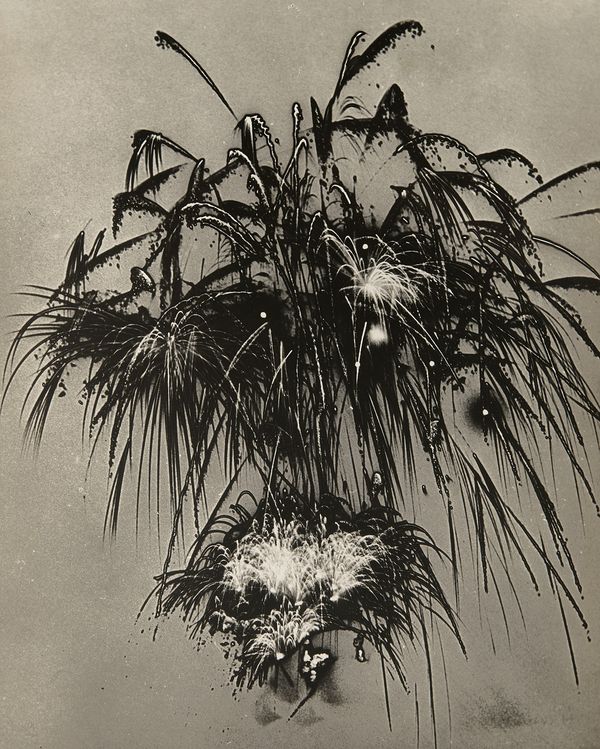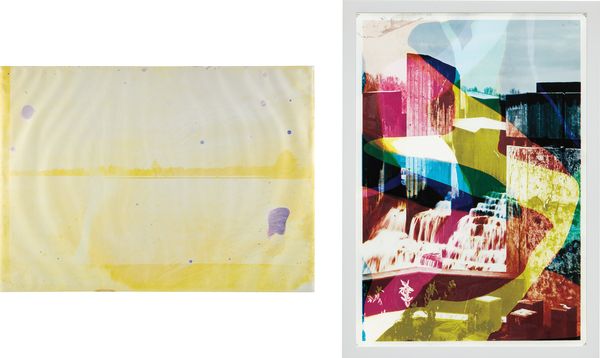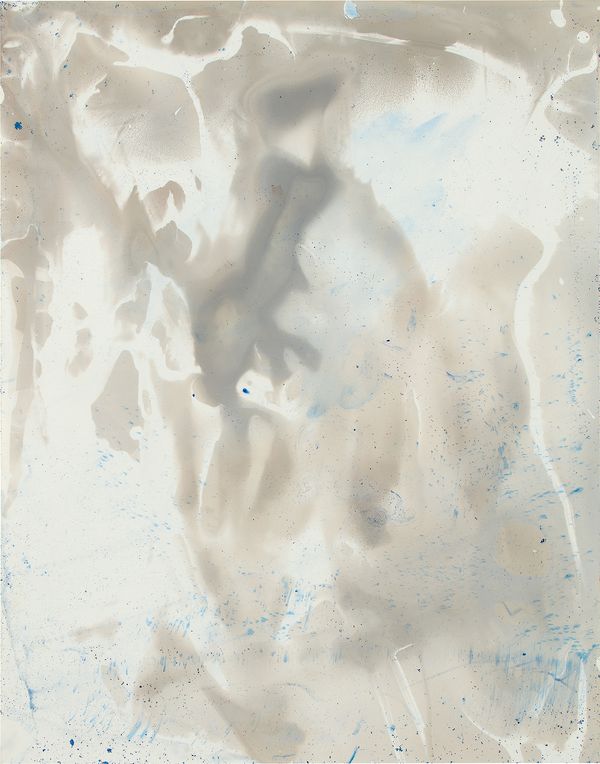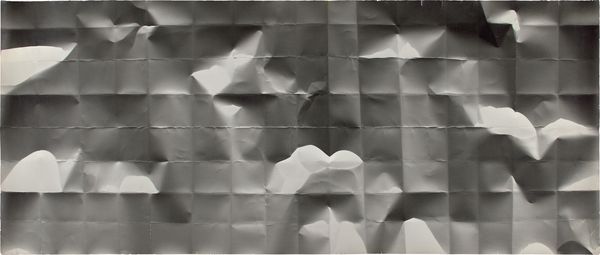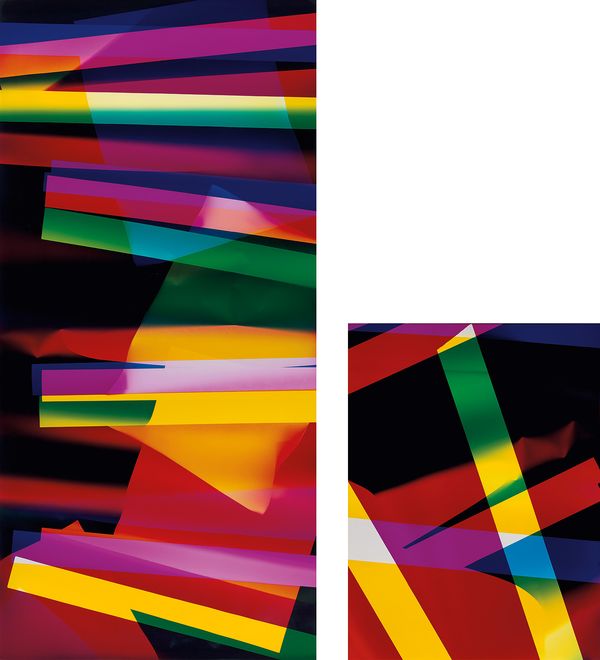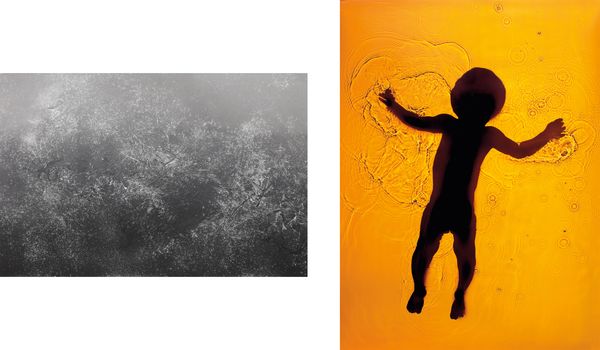Man Ray Le Bouquet (Fireworks), 1935
The malleable science behind photography has long afforded artists the creative freedom to explore image-making through a variety of techniques and practices. While traditional lens-based photography, and the idea that a photograph is a document of the real world, has been the dominant trend in the history of the medium there is much to be said about those photographers working outside the parameters of orthodox camera or developing processes, producing images that push photography’s visual and conceptual boundaries.
Man Ray
Man Ray’s experimentation with photography propelled the medium in exciting ways and continues to influence new generations of artists. Le Bouquet (Fireworks), 1934, shows Man Ray’s deft use of solarization, the technique of introducing light during the development process which yielded a variety of visual effects, including the selective reversal of tones. In Le Bouquet, it creates an image that pivots between dream and reality.
Matthew Brandt
Matthew Brandt Lake Tapps, WA 3, 2012, and Stepping Stone Falls 9 C2M1Y2, 2016
Like Man Ray, Matthew Brandt also experiments with modifications to the development process. In both Lake Tapps, WA 3, 2012, and Stepping Stone Falls 9 C2M1Y2, 2016, Brandt collected water from the sites shown in his photographs, introducing it during development. The water samples, each with its own unique blend of minerals and impurities, create dynamic surface abstractions resulting in self-referential works in which the object and the subject become one.
Mariah Robertson & James Welling
Mariah Robertson 66, 2011
In 66, 2011, and Feb (10) c. 2014, 2014, Mariah Robertson and James Welling, respectively, take Man Ray and Brandt’s exploration of development one step further by entirely removing the initial camera-based image. Instead, they both use photographic chemistry and materials in new ways to create abstract and unanticipated images.
James Welling Feb (10) c. 2014, 2014
Sheila Pinkel & Walead Beshty
Sheila Pinkel Untitled from Folded Paper Series, 1974-1982
In Sheila Pinkel’s Lightworks from the 1970s and Walead Beshty’s Three Color Curl diptych from 2012, the artists work without a camera to create images of light and form, and—in the case of Beshty, color—by exposing photosensitive paper directly to light, manipulating both to produce visually dazzling work.
Walead Beshty Four Magnet, Three Color Curl (CMY: Irvine, California, September 13th 2009, Fuji Crystal Archive Type C) and Abstract (Four Magnet, Three Color Curl (CMY: Irvine, California, September 13th 2009, Fuji Crystal Archive Type C)), 2012
Adam Fuss
Adam Fuss Untitled, 2005, and Untitled, 2003
Adam Fuss is known for his incorporation of 19th-century techniques into his 21st-century practice, utilizing pinhole cameras, and experimenting with cameraless images and daguerreotypes. Untitled, 2005, and Untitled, 2003, show Fuss working without a camera, manipulating light onto the surface of both color and black-and-white photographic paper, yielding images that acknowledge the medium’s history while moving it into the future.
